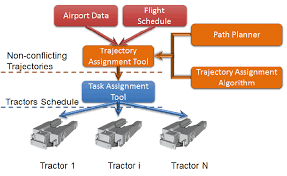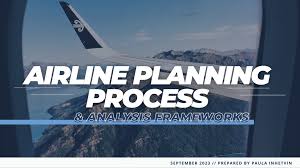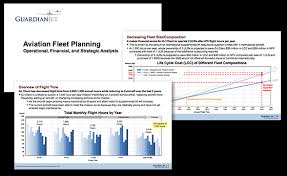Fleet Planning in the Airline Industry 
Fleet planning is one of the most critical aspects of airline management. It involves the strategic decisions regarding the types, numbers, and deployment of aircraft that an airline will operate to meet its business goals while responding to market conditions, regulatory requirements, and financial constraints. A well-crafted fleet plan can enable airlines to optimize their operations, improve profitability, and maintain flexibility in an increasingly competitive and volatile environment.
In this detailed overview, we will examine the key components of fleet planning in the airline industry, the factors influencing fleet decisions, the methodologies used to make these decisions, and the challenges airlines face in developing and executing a successful fleet strategy.
- The Importance of Fleet Planning in the Airline Industry
Fleet planning is vital for ensuring that an airline operates efficiently, remains competitive, and delivers high-quality service to passengers. A fleet plan outlines how an airline will source, operate, maintain, and retire its aircraft to meet passenger demand and optimize operational efficiency. The goals of fleet planning typically include:
- Cost Efficiency: Maximizing the profitability of an airline by balancing operational costs, including aircraft acquisition, fuel, maintenance, and staffing. This is a critical factor in keeping airfares competitive.
- Fleet Utilization: Ensuring that the aircraft in the fleet are used efficiently, minimizing idle time and maximizing the number of hours each plane flies per day.
- Revenue Maximization: Selecting aircraft that match the demand on various routes, ensuring that there are enough seats on high-demand routes without overcapacity on less popular ones.
- Flexibility: Enabling the airline to respond to changes in the market or external shocks (such as fuel price hikes, economic downturns, or pandemics).
- Safety and Compliance: Ensuring the fleet meets all aviation safety and regulatory standards, which vary by region and airline.
- Environmental Goals: With increasing pressure for airlines to reduce their carbon footprints, fleet planning also involves choosing more fuel-efficient and environmentally friendly aircraft.
- Key Factors Influencing Fleet Planning Decisions
Fleet planning decisions are influenced by a variety of factors, both internal and external to the airline. These factors must be carefully analyzed to ensure that the fleet meets the airline’s operational, financial, and strategic needs.
- Market Demand and Route Network

One of the primary considerations in fleet planning is the nature of the airline’s route network. Airlines must match the capacity of their aircraft with expected passenger demand. This involves analyzing data on historical flight demand, seasonal trends, and future growth projections for specific regions. There are several considerations:
- Hub-and-Spoke vs. Point-to-Point: Airlines that operate under a hub-and-spoke model (e.g., Delta Air Lines or American Airlines) will need to ensure they have enough larger aircraft for long-haul flights and smaller aircraft for regional routes. Conversely, point-to-point carriers like Southwest Airlines may focus more on efficient, narrow-body aircraft that are flexible for short- to medium-haul routes.
- Geography: Airlines operating in larger countries (e.g., the United States, Russia, or China) may need long-range aircraft to cover vast distances, while airlines operating in smaller regions may focus on more regional or narrow-body aircraft.
- Seasonality and Specialization: Airlines must factor in changes in demand depending on the time of year. For instance, charter airlines that cater to holiday destinations may need to adjust their fleet to meet peak season demands. Similarly, regional carriers must adjust fleet size based on fluctuations in business or tourist travel.
- Aircraft Performance and Cost Structure

Each aircraft has its own set of performance characteristics that must be taken into consideration during fleet planning:
- Aircraft Capacity: Airlines must select aircraft that align with the demand for particular routes. For example, a carrier might need larger aircraft, such as the Boeing 777 or Airbus A350, for high-demand long-haul international routes, while using smaller regional jets, like the Embraer 175 or Bombardier CRJ900, for domestic or short-haul flights.
- Fuel Efficiency: Fuel is one of the largest operational expenses for airlines. The introduction of newer aircraft, such as the Boeing 787 Dreamliner or Airbus A320neo, which offer superior fuel efficiency compared to older models, has become a crucial factor in fleet planning.
- Maintenance Costs: Aircraft maintenance is a substantial cost, and airlines must choose aircraft that balance purchase price with long-term reliability and maintenance efficiency. Aircraft from manufacturers like Boeing and Airbus offer different levels of cost efficiency, which influences fleet decisions over the lifespan of the aircraft.
- Aircraft Acquisition Cost vs. Lease Cost: Airlines must decide whether to purchase or lease aircraft. Purchasing involves a larger upfront cost but might be more economical in the long run, while leasing allows for greater flexibility and lower initial investment but comes with ongoing leasing payments.
- Technological Advancements and Innovation
The aviation industry is heavily influenced by ongoing technological advancements, and fleet planning must consider future technological shifts. Some key innovations influencing fleet decisions include:
- Electric Aircraft: There is growing interest in electric-powered aircraft, especially for short-haul flights. Companies like Joby Aviation and Eviation Aircraft are working on electric vertical take-off and landing (eVTOL) planes, which could transform regional and urban air mobility.
- Sustainability: Increasing pressure from governments, passengers, and investors for airlines to reduce their carbon emissions has pushed fleet planning to focus on greener alternatives. The adoption of sustainable aviation fuels (SAF), which can reduce CO2 emissions by up to 80%, is gaining momentum. Airlines might also opt for newer, more fuel-efficient aircraft like the Airbus A321XLR or Boeing 737 MAX, which promise better environmental performance.
- Autonomous Flight: While still in the experimental phase, autonomous and remotely piloted aircraft are being developed. While they may not impact fleet planning immediately, they could eventually reduce operating costs, especially for smaller, short-haul carriers.
- Economic and Regulatory Environment
Fleet planning decisions are highly sensitive to the economic and regulatory environment. Several factors can affect airline strategies:
- Fuel Prices: Airlines’ profitability is directly tied to fluctuations in fuel prices. When prices spike, airlines may opt for more fuel-efficient aircraft or delay the purchase of less efficient models. Conversely, when prices are low, airlines may be more inclined to invest in expansion and increase capacity.
- Government Regulations: National and international regulations on emissions, safety, and operations influence fleet planning decisions. For example, stricter environmental laws in the European Union may encourage airlines to replace older aircraft with more environmentally friendly models. Similarly, deregulation in certain markets (e.g., Europe’s Open Skies Agreement) can lead to increased competition and influence fleet capacity decisions.
- Economic Cycles: Economic downturns can prompt airlines to downsize their fleets or delay purchasing new aircraft. Conversely, during periods of economic growth, airlines may seek to expand their fleets to meet rising demand. The COVID-19 pandemic, for example, caused a temporary reduction in air travel demand, leading to large-scale fleet reductions by many airlines.
- Fleet Planning Methodologies

Several methodologies are used to plan an airline’s fleet, ranging from simple heuristics to complex mathematical models. The choice of methodology depends on the airline’s size, market conditions, and available data.
- Qualitative Approach
This approach relies on the experience, judgment, and intuition of management and key decision-makers within the airline. While this approach may be less data-driven, it is often useful in situations where the future is uncertain, or data is unavailable. For instance, an airline might decide to expand its fleet to capitalize on anticipated growth in a specific market or region.
- Quantitative Approach
This method uses mathematical and statistical models to determine the best fleet mix. It typically involves:
- Linear Programming Models: These models optimize the allocation of resources (e.g., aircraft, routes, crew) under a set of constraints. Linear programming can help determine the ideal number and type of aircraft needed to maximize profit while satisfying demand and capacity constraints.
- Simulation Models: These models simulate the behavior of an airline’s operations over time, taking into account factors such as fleet size, flight schedules, maintenance cycles, and crew availability.
- Markov Decision Processes: This technique is used to model decision-making in situations where outcomes are uncertain. It can be applied to fleet planning by simulating various future states based on current decisions.
- Hybrid Approach
Many airlines use a hybrid approach that combines both qualitative and quantitative methods. For example, the initial fleet strategy might be shaped by senior management’s judgment and market knowledge, while more detailed fleet optimization could be carried out using quantitative models.
- Challenges in Fleet Planning
Fleet planning is an intricate process fraught with challenges. Some of the key difficulties airlines face include:
- Long Lead Times: Aircraft manufacturing is a long-term process, and airlines must forecast demand several years in advance to ensure they can acquire the appropriate aircraft at the right time.
- Market Uncertainty: Changes in market conditions, such as a sudden drop in demand (as seen with the COVID-19 pandemic), can leave airlines with overcapacity or underutilized aircraft.
- Financial Constraints: Airlines often face financial pressures that can limit their ability to invest in new aircraft, particularly during economic downturns.
- Regulatory Pressure: Adhering to environmental regulations and safety standards while balancing cost-effectiveness is a key challenge for fleet planners.

- Global Competition: Airlines must remain competitive in a global market, which means constantly reassessing the fleet to ensure it offers the best combination of cost, capacity, and service for the routes served.
- Conclusion
Fleet planning is a crucial element of strategic airline management, balancing long-term goals with day-to-day operational challenges. Airlines must carefully consider a variety of factors—including market demand, aircraft performance, cost structures, technological advancements, and external economic and regulatory pressures—when making fleet decisions. As the airline industry continues to evolve, fleet planning will need to become more sophisticated, integrating emerging technologies and responding to the growing demand for sustainability and operational flexibility.
In a rapidly changing world, the ability to adapt fleet strategies to unforeseen events—such as economic shifts, geopolitical changes, and public health crises—will determine the long-term success of an airline. As such, fleet planning is not only about optimizing aircraft procurement and routes; it is about ensuring that an airline remains agile, resilient, and capable of competing in an increasingly complex global marketplace.
